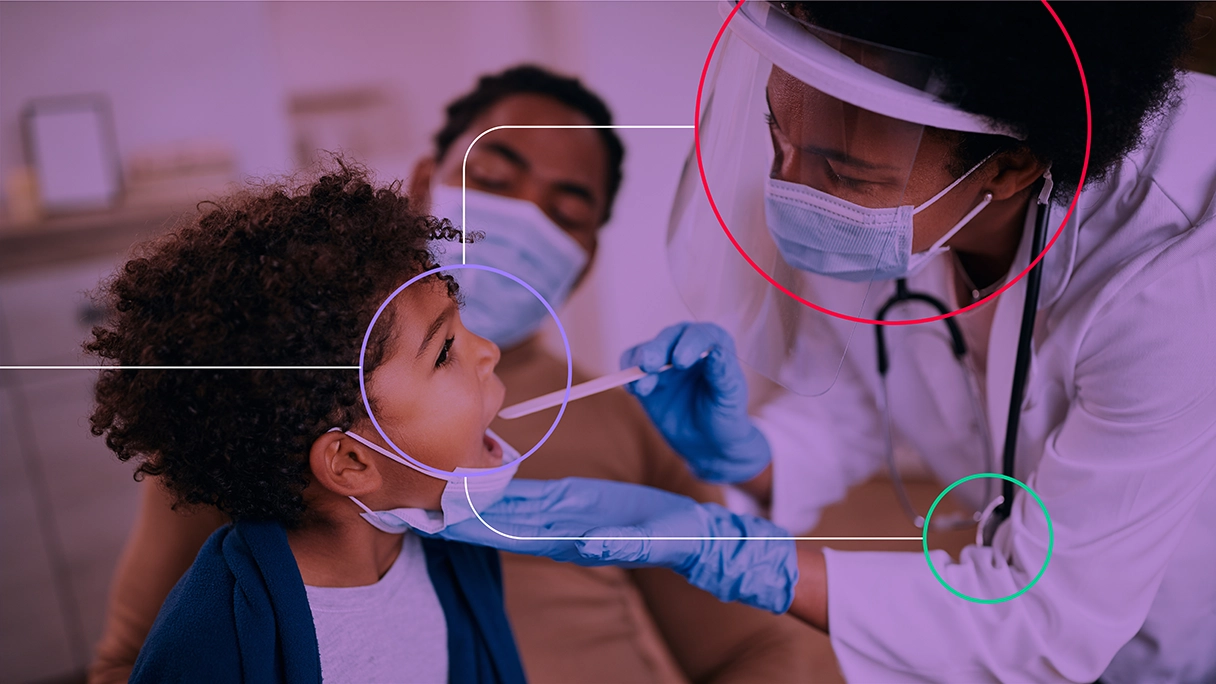
What is health equity?
We hear the term often, but what does it truly mean? According to the CDC, health equity is achieved when “every person has the opportunity to attain his or her full health potential and no one is disadvantaged from achieving this potential because of social position or other socially determined circumstances.”
Efforts to achieve and advance health equity and improve access to quality care have increased dramatically as COVID-19 brought to light the longstanding racial and economic disparities that exist within our nation’s healthcare system. According to 2022 Accenture and HIMMS Market Insights research, nine out of ten healthcare executives now view health equity as a top business priority.
How to advance health equity
One way to advance health equity is to eliminate health disparities and increase access to care for vulnerable, underserved populations. Community Health Centers and Federally Qualified Health Centers (FQHCs), which are core sources of primary care in the U.S., are largely leading these efforts. One driving force behind their work? Patient communication.
Health centers are a vital network of care
Since 1965, federally supported health centers have been providing an affordable care option to more than 29 million – or 1 in every 12 – people in the U.S. By reducing barriers such as cost, lack of insurance, distance, and language for their patients, health centers help increase access to timely primary care.
Located in high-need areas, health centers serve those facing the greatest difficulty accessing or affording essential health care services, such as low-income or homeless patients, agricultural workers, veterans, Medicaid beneficiaries, and minority patients. Regardless of insurance status or ability to pay, patients can access a comprehensive set of care services, including medical care, behavioral health, vision, dental, and case management, among others, depending on the needs of the community.
In addition to providing high-quality care, health centers help to eliminate emergency room visits or inpatient stays and provide substantial cost benefits, generating over $24 billion in savings for the health care system annually.
A trusted source in uncertain times
Beyond providing access to high-quality care and enabling cost savings, health centers act as trusted sources in historically underserved communities.
In particular, over the course of the pandemic, people turned to health centers to learn about the facts at a time when misinformation clouded the entire healthcare landscape.
Amid efforts to overcome vaccine hesitancy and expand access to care, community health workers took on a new level of importance as trusted messengers, especially among people of color. Through their efforts, health centers have administered over 19 million doses of the vaccine to date, of which more than 60 percent were administered to racial-ethnic minorities. Of these vaccinations, FQHCs used WELL Health® to facilitate 1.8 million vaccine appointments.1
Based on a joint analysis from the National Association of Community Health Care and the Morehouse School of Medicine’s National COVID-19 Resiliency Network (NCRN), researchers found that areas with community health centers experience fewer COVID-19 deaths and infections, thus leading to improved outcomes.
Even beyond the pandemic, it’s clear health centers and their workers play a critical role in advancing health equity and improving patient outcomes. Their footprint will only continue to grow over time – so much as 11% by 2030, according to a National Center for Health Workforce Analysis.
In order to expand their impact, health centers can leverage technology, specifically digital patient communications, to reach even more vulnerable patient populations.
Using patient communication to close gaps in care and advance health equity
All too often, vulnerable patients fall through the healthcare cracks. At a time in which social determinants of health are a major focus across the industry, however, leaders are now prioritizing the health of their patients beyond the four walls of a hospital. This is where technology can help.
With the use of digital patient communications, health centers can help bridge gaps in care, proactively recruiting new patients in the community or ensuring existing patients attend their appointments through automated messages. When properly and effectively implemented, patient communication platforms can also help streamline access to medical records, deliver educational information, and get patients back into care for preventive screenings, wellness exams, or routine visits.
Since many patients in underserved communities may be working full time, it’s essential they have more convenient methods of communication with their provider, such as conversational messaging. This not only allows them to reach out on their own time, but also enables a true open line of communication in which patients can ask questions, receive advice, or seek care as a first line of defense instead of going to the ER.
Tiburcio Vasquez Health Center (TVHC), an Artera customer, is one community health center that proactively texts its patients to pre-schedule follow-up care. Caleb Sandford, Chief Transformation Officer at TVHC, comments on this approach in the Health Pilots podcast:
“By doing these appointment recalls and ensuring patients come back for their follow-up care, we’re not just providing one-time urgent care anymore, we’re providing longitudinal care.”
Their goal is to get everybody onto a care plan and make sure they stick to it to eliminate urgent care or emergency visits. “When patients are delayed in their primary care, that’s when healthcare starts to deteriorate,” Sandford says.
Multilingual patient communication is essential
It’s also important to note the diversity that exists in these communities. As English may not be a patient’s first language, multilingual support is vital for reaching more of the population, thus helping to overcome a potential language barrier that may impede access to care. Being able to reach patients by text in the language they prefer, without the need for a smartphone or app to download, reduces disparities in care access.
Overall, leveraging digital communication platforms that are easily accessible for diverse populations will help health centers close gaps in care, improve outcomes, and reduce readmissions.
Ankoor Shah, Management Consulting Principal Director and Health Equity Lead at Accenture, reiterated this in the 2022 Accenture and HIMMS Market Insights research: “Technology, in concert with community partnerships, should be leveraged to catalyze health equity agendas in order to reduce disparities in care access, experience, and ultimately outcomes.”
Artera is committed to working with health centers to advance health equity and improve outcomes
Since its inception, Artera has helped over 130 community health centers and FQHCs engage vulnerable patient populations in their care through secure patient communications.
In recent news, Artera announced a partnership with OSIS, a non-profit technology services organization providing NextGen Healthcare technology assistance to community health centers. The partnership offers OSIS Members – community health centers and FQHCs – preferred access to Artera’s digital patient communications platform through the OSIS Partner Program.
Artera addresses the unique needs of community health centers and their patient populations thanks to its suite of flexible offerings, including:
Accessible Digital Patient Engagement
Artera delivers a simple SMS/texting solution that does not require an app download, internet access or even a password.
Multilingual Patient Communications
Artera offers 100+ languages enabling providers to engage their diverse patient population in their preferred language.
Call-To-Text Functionality
Providers can easily move important health conversations to text which enables patients to engage with healthcare providers via text at their convenience.
As community health centers continue to expand their instrumental role in providing equitable care across the nation, Artera will be here to support and celebrate the incredible work these health centers do every day for underserved populations. ♥
1Data set from 12/9/2020 to 4/4/2022, pulled by Artera Data Insights.


